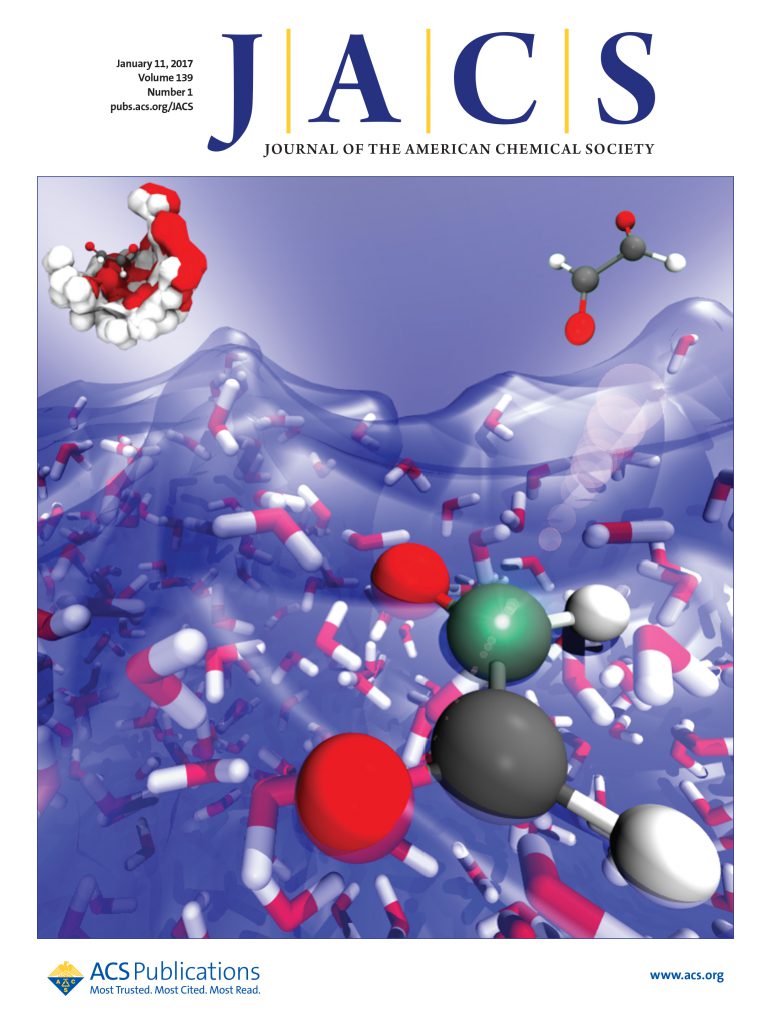用于mRNA配方的三烷基没食子酰氨基胺可电离脂质组合合成及评价。
IF 14.4
1区 化学
Q1 CHEMISTRY, MULTIDISCIPLINARY
引用次数: 0
摘要
脂质纳米颗粒(LNPs)含有可电离的阳离子脂质,近年来引起了广泛的兴趣,特别是在它们被用作COVID-19疫苗的mRNA递送系统之后。在这里,我们报道了以没食子酰氨基胺为基础的可电离脂质的组合合成。从没食子酸甲酯开始,三个烷基尾部被取代到芳香环上,羧酸被转化成一个可电离的叔胺头基。优化后的合成方案可扩展,无需层析,只需两个转化步骤,就能以高收率(>88%)生成43种不同脂质的文库。通过改变可电离胺头基和烷基尾部的长度、饱和度和分支,我们发现脂质尾部的长度显著影响溶解度和mRNA包封效率。由不饱和庚基和辛基尾部组成的三烷基脂质可以制备出低于150 nm的LNPs,包封效率超过85%。针对商业MC3 LNP配方的基准实验确定了四种脂质,可以在体外进行有效的mRNA转染。此外,对选定LNP制剂小鼠的体内研究表明,静脉给药后,三种脂类在肝脏和脾脏的荧光素酶报告蛋白表达方面与MC3相当。此外,这些脂质在脾脏和肝脏中没有显示出任何毒性。这些结果清楚地强调了三烷基没食子酰氨基胺脂质的翻译潜力,特别是基于mrna的治疗。本文章由计算机程序翻译,如有差异,请以英文原文为准。
Combinatorial Synthesis and Evaluation of Trialkyl Galloyl Amidoamine Ionizable Lipids for mRNA Formulation.
Lipid nanoparticles (LNPs), containing ionizable cationic lipids, have attracted widespread interest in recent years, particularly following their use as mRNA delivery systems for COVID-19 vaccines. Here, we report on the combinatorial synthesis of galloyl amidoamine-based ionizable lipids. Starting from methyl gallate, three alkyl tails were substituted onto the aromatic ring, and the carboxylic acid was transformed into an ionizable tertiary amine headgroup. Optimization of the synthetic protocol resulted in a scalable, chromatography-free procedure requiring as few as two transformation steps and yielding a library of 43 different lipids in high yield (>88%). By varying the ionizable amine headgroup and the length, saturation, and branching of the alkyl tails, we found that the length of the lipid tail significantly impacted solubility and mRNA encapsulation efficiency. Trialkyl lipids comprising unsaturated heptyl and octyl tails enabled the formulation of sub-150 nm LNPs with encapsulation efficiencies exceeding 85%. Benchmarking experiments against a commercial MC3 LNP formulation identified four lipids that enabled potent mRNA transfection in vitro. Moreover, in vivo studies in mice with selected LNP formulations indicated that three lipids performed on par with MC3 in terms of luciferase reporter-protein expression in the liver and spleen after intravenous administration. Additionally, these lipids did not show any toxicity in the spleen and liver. These results clearly highlight the translational potential of trialkyl galloyl amidoamine lipids and more particularly for mRNA-based therapies.
求助全文
通过发布文献求助,成功后即可免费获取论文全文。
去求助
来源期刊
CiteScore
24.40
自引率
6.00%
发文量
2398
审稿时长
1.6 months
期刊介绍:
The flagship journal of the American Chemical Society, known as the Journal of the American Chemical Society (JACS), has been a prestigious publication since its establishment in 1879. It holds a preeminent position in the field of chemistry and related interdisciplinary sciences. JACS is committed to disseminating cutting-edge research papers, covering a wide range of topics, and encompasses approximately 19,000 pages of Articles, Communications, and Perspectives annually. With a weekly publication frequency, JACS plays a vital role in advancing the field of chemistry by providing essential research.

 求助内容:
求助内容: 应助结果提醒方式:
应助结果提醒方式:


